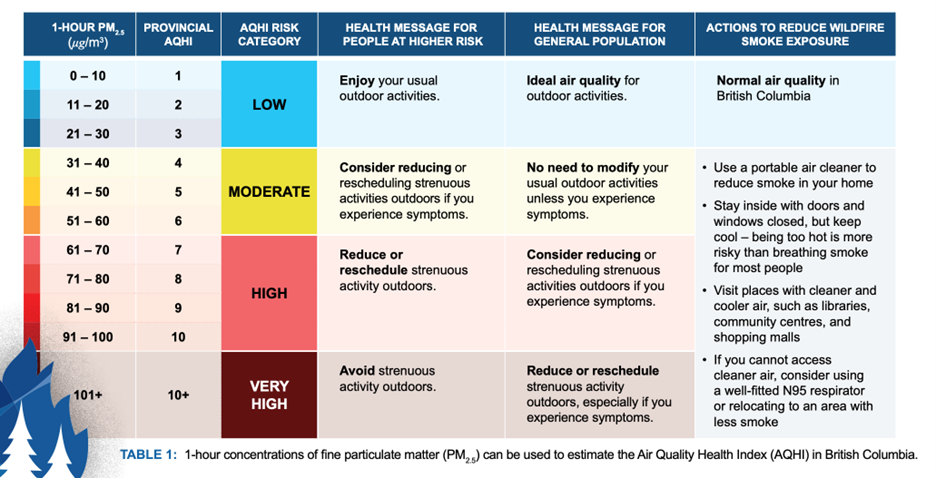June 24, 2024
The impact of summertime environmental factors on the heart

We sat down with Dr. Stephen Wilton, MD, a cardiologist and member of the Canadian Cardiovascular Society’s Planetary Health Working Group to discuss how wildfire smoke and extreme heat can impact heart health. Continue reading for the surprising statistics and learn how to protect yourself during the spring and summer months.
How does air pollution, such as from wildfire smoke, impact heart health?
Air pollution is a major cardiovascular risk factor. Overall, air pollution is responsible for about eight million premature deaths annually around the world, and about 15,000 premature deaths in Canada. About half of these are related to cardiovascular disease or stroke. Globally, air pollution is the fourth leading cardiovascular risk factor.
In Canada, the major sources of air pollution are from transportation, industrial processes, and particularly wildfire smoke. These sources of pollution contain a variety of noxious chemicals, the best studied of which are microscopic particles suspended in the air, known as PM2.5. There is very good epidemiological evidence showing that even relatively short-term exposure to high levels of PM2.5 increases the risk of heart attack, stroke, atrial fibrillation and cardiac arrest, as well as respiratory and other health issues.
What about heat waves?
Extreme heat can also have important cardiovascular health consequences. During the June 2021 heat dome that affected BC and Alberta, more than 600 people lost their lives. Most of these deaths were cardiovascular in nature. Heat and air pollution can also interact to worsen the effect of the other.
What is happening within the body that increases the risk of heart problems in the presence of these factors?
PM2.5 and other pollutants are inhaled and can penetrate deep into lung tissue. This can lead to acute increases in heart rate and blood pressure, along with other processes that may trigger acute cardiovascular events like heart attacks.
Exposure to extreme heat can lead to heat stroke, which, if untreated, can cause changes in heart rhythm patterns, inflammation and blood clots.
Who is most at risk?
Small children, the elderly, people with established heart, lung, or cerebrovascular disease, pregnant women, and people who cannot avoid exposure due to their occupation or socioeconomic condition, such as outdoor workers and people experiencing homelessness.
Is this a growing problem? If so, why?
There have always been wildfires and heat waves. However, climate change is making these more intense, frequent and widespread due to our hotter, dryer and longer summers. Also, more people are living in areas prone to wildfires, increasing those at risk. In 2023, Canada experienced its worst wildfire season by far. All provinces and territories were affected. More than 6,000 fires burned a staggering 16.5 million hectares of land – an area larger than Greece and more than double the record set in 1989. Many communities were directly affected, including Edson, Alberta, which was evacuated several times in 2023.
Is there anything people can do to decrease their risks?
Yes! Firstly, be aware of and respond appropriately to air quality advisories in your area. The air health quality index (AHQI) is a summary of air pollution in the local area, and in most places in Canada it is updated hourly. There are specific recommendations for limiting exposure to outdoor air for a given AHQI and underlying risk level.
Healthy people should reduce or avoid strenuous outdoor exercise when AHQI levels are seven or higher. People with underlying risk, such as the elderly and those with heart or lung disease, should restrict their outdoor activities at lower AHQI levels (see chart). When the air quality is bad, close your windows and adjust your heating and ventilation systems to not take in outdoor air. HEPA filters in rooms where you will be spending a lot of time can be helpful. You can also access indoor spaces with clean air such as libraries and shopping malls.
When it comes to heat waves, it is important to do things to keep cool and hydrated. Again, those without air conditioning can access public air-conditioned spaces for respite. It’s critical to check on friends and family who may be unable to respond to extreme heat, in particular the frail elderly.
Why is this topic important to you?
As a health-care provider who looks after many patients in at-risk groups, I have a responsibility to inform my patients about the potential effects of air pollution and extreme heat on their health and provide them with the tools they need to look after themselves.
Learn more about the impact of climate change and wildfire on your health on the following episodes of the Canadian Cardiovascular Society’s podcast:
Episode 9: Climate and Heart Health
Episode 10: Wildfires Impacts on Cardiovascular & Respiratory Health
Episode 11: Exploring the Impact of Climate Change on Our Hearts
For information and resources, visit the following links:
Patient information from Alberta Health Services


Dr. Steve Wilton is a cardiologist and member of the Canadian Cardiovascular Society’s Planetary Health Working Group.
Libin Cardiovascular Institute
